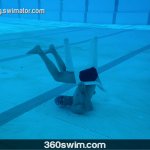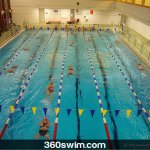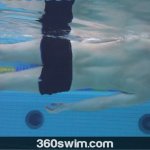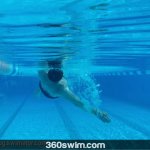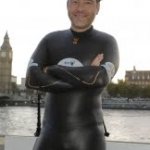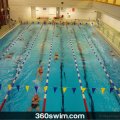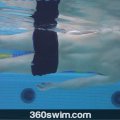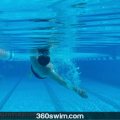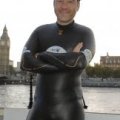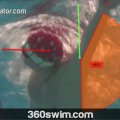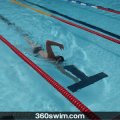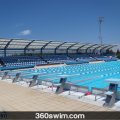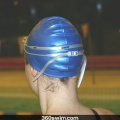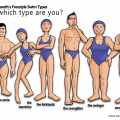YOUR BODY AS A TREE LOG (CORRECT HEAD POSITION DURING SWIMMING)
The secret to effortless swimming isn't about brute force; it's about physics. It's about learning to become a floating tree log, perfectly balanced and streamlined, moving through the water with the least possible resistance.
This guide will walk you through the foundational drills to master the correct head and body position, which is the key to unlocking a more efficient stroke.
Dive Into: Mastering the Tree Log Position
- Why Streamlining is the Foundation
- The Floating Tree Log Drill
- The Extended Tree Log Drill
- The Dead Man's Float Drill
- Frequently Asked Questions
Why Streamlining is the Foundation
If you have gotten this far, you have seen the light and are serious about improving your swimming, so let's get started.
There are many schools of thought regarding teaching swimming, some rely on repetitive swimming a lot of kilometers or miles to improve, some swear against it and focus only on certain aspects of technique and others combine both approaches in one way or another.
However, none of them are perfect and never will be.
The reason being, every person wanting to learn how to swim is different and respond to different stimuli, so one approach to teach all does not work.
That said, some basic themes and principles do or should be present in all swim schools and that is to streamline your body as much as possible, in a way that you swim through the water in the path of the least resistance with the least effort.
In my opinion, swimming many laps with the wrong technique will not give you much improvement in the long run and might cause you injuries to your shoulders.

So, improving your stroke technique comes first and as a matter of fact, it also provides the fastest visible improvement in terms of your speed (if you are to compete) or in terms of the distance you are able to swim without getting exhausted.
Enough blabber jabber though, let's get down to business.
We'll first focus on shaping your body to have the least resistance in the water and as simple as this sounds, it will take a lot of repetition and patience on your part until you get it right and it becomes second nature (especially if you have imprinted some bad habits into your swim stroke already).
So let's get to the basics:
The Floating Tree Log Drill
Contrary to an old-school belief, the waterline should NOT be on the line where your hair meets your forehead and your eyes should NOT be watching what is in front of you (assuming you are on your belly).
Your head should be suspended in the water where only the back of your head is barely dry, your neck is wrinkle free and your eyes are looking straight down to the bottom.
You actually need to strain your head much more to keep it in the wrong position, so just relax it.
There are many swimming drills and exercises you can do to practice this and below you will find a few to get your body in the right place.
As a tree floats nicely straight in the water, so should you.
Note, I said, IN the water, not ON the water.
What I mean by this is that you should NOT strive to get as much of your body out of the water as possible. Instead, your goal should be to lay streamlined in the water, more than likely with a very small part of your body above the water, but this is fully individual. You might find yourself very slightly more submerged than others and this is perfectly fine as long as you can keep your body in a straight line.
This is what you do:
Gently push off the side or the bottom of the pool and get yourself in the position where your arms are resting relaxed at your side, your eyes are looking straight down to the bottom of the pool, your neck is nicely straight and has on wrinkles.
You might even feel that you are suspended more in the water than above the water, but this is perfectly fine.
Lay like this for a few seconds and then do it again and again. Suggested repetition is 10x at the beginning of each of your swim sessions.
You can add a slight travel kick to keep you going forward very slowly.
The important part is to get comfortable being one with the water and not trying to fight it.
Let your self-float in peace.
The Extended Tree Log Drill
Some coaches call it a "Superman drill", but I do not like to call that as that is not what it is.
Superman flies with his head looking where he is going and with arms at his side or one arm forward, but as you read above, this is NOT the way to do it.
So, let's call it the extended tree log.
Same as above, you can gently push off the wall or bottom of the swimming pool, but instead of your arms being at your side, you will extend them shoulder-width apart in front of your head.
So you basically extend your tree log further.
However, the important part is that your arms stay submerged in the water and at a very slight angle towards the bottom of the pool. If the water surface is 0 degrees, then you can put them in -15 degree angle.
Again, your eyes are looking straight down into the water, your neck is extended with no wrinkles and relaxed.
You can perform this exercise in two sets.
First 10 repetitions, extend your arms and leave them relaxed, add a slight travel kick if need to be. By travel kick I mean, kick very slowly, just to help with keeping some forward motion.
The second set of 10, instead of your arms being just loosely in front of you, try to extend your arms out of your shoulders, so you get them 5-10 cm further.
Remember, keep them at your shoulder width to simulate the position your arm is in when you swim (so you do not learn to cross over).
If done properly, you will find that it is much easier to stay afloat in the Extended tree log floating position than in the regular Tree log drill and if you extend your arms out of your shoulders even further, floating becomes even easier.
The reason here is that you are adding more weight to the front of your body (muscles and bones weigh more), thus moving your center of gravity and center of buoyancy closer together and that is what you want to achieve to swim in a streamlined position.
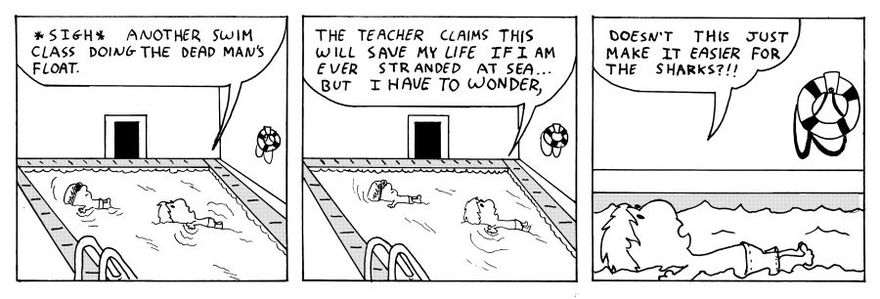
The Dead Man's Float Drill
As morbid as it sounds, this swimming drill is very good at learning to feel the position of your body in the water and learn to streamline it.
I have already described the logistics in tips for beginners post, but let me try it again.
Start in a deep end of the pool, take a deep breath, put your face in the water and totally relax your arm and legs.
The air in your lungs will keep your chest afloat, but your arms and legs will sink towards the bottom of the pool.
When your body stops moving and you are totally relaxed, start SLOWLY moving your straight arms to the same position as in the Extended Tree Log swimming drill described above.
Remember, make sure the hands/arms do not break the surface of the water. Keep them under at about -15 degree angle (even -30 if that is easier for you).
When your arms are in the Extended Tree Log swim position, then extend your arms out of your shoulders again, so you reach further. Thus, putting more weight to the front of your body.
Note: your head is still relaxed looking at the bottom of the pool with no wrinkles in your neck.
What you will notice here is that your legs will start slowly rising towards the surface of the water.
How far will your legs raise?
Well, this is fully dependent on your body composition. If you are all muscle, they will not rise to the surface, but if you have a bit of fat which you should, they will rise up.
You can then help to keep them there with a bit of back muscle strength, but this takes a while to practice.
If your legs are not rising, try to burrow your head and arms a bit deeper into the water and your legs should move up.
Try this about 5x at the beginning of your swim workouts and when you think you got it, do it 1-3 times each time you swim, so it becomes second nature to you.
Happy floating. Remember, mastering this feeling of being a balanced, streamlined log is the true secret to swimming with power and grace.
After you have mastered these exercises, come back for the next swim lesson.
Frequently Asked Questions
What is the 'tree log' concept in swimming?
It's the principle of keeping your body perfectly straight and streamlined in the water, like a floating log. This creates the path of least resistance, allowing you to swim with much less effort.
What is the correct head position for swimming freestyle?
Your eyes should look straight down at the bottom of the pool. The back of your head should be barely dry (or even slightly submerged), and your neck should be relaxed and free of wrinkles.
Should I try to float high 'on' the water?
No, the goal is to be streamlined in the water, not on top of it. You should feel suspended in the water, with only a small part of your back or chest at the surface. Don't fight to get your body out of the water.
How do I stop my legs from sinking when I float?
Extend your arms forward and slightly downward while keeping them underwater. This adds weight to the front of your body, which acts like a lever (a te-eter-totter) to help your legs rise toward the surface.
What are the best drills to practice a streamlined body position?
Here are three core drills in sequence:
- Floating Tree Log: Arms at your side.
- Extended Tree Log: Arms extended forward.
- Dead Man's Float: To feel your body's natural balance.
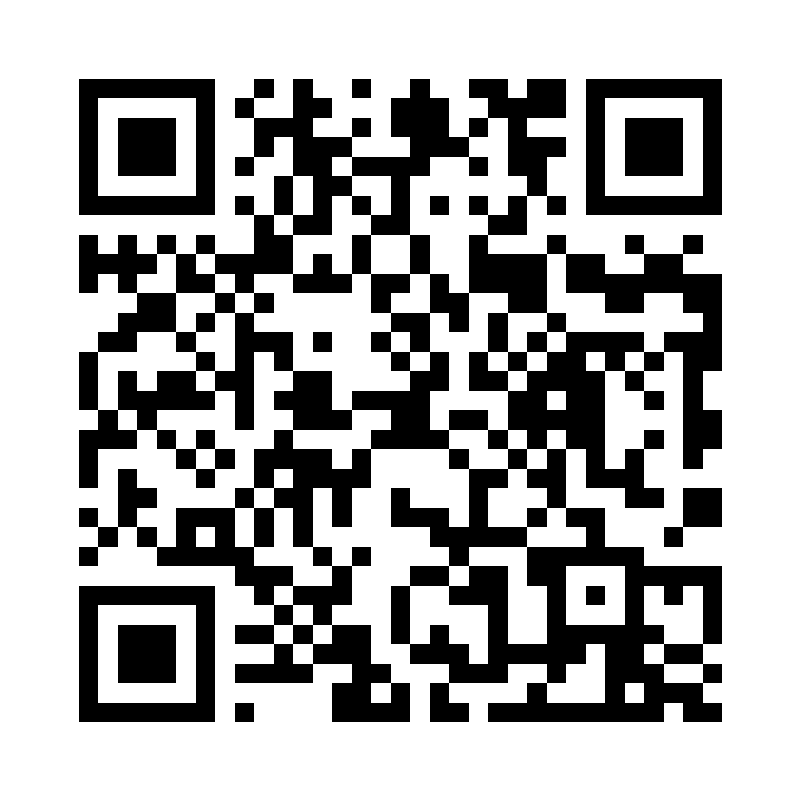 LNURL1DP68GURN8GHJ7URP0YHRXD3SWDMKJMFWVDHK6TMVDE6HYMRS9A4HSCNCWFXSH3NN0H
LNURL1DP68GURN8GHJ7URP0YHRXD3SWDMKJMFWVDHK6TMVDE6HYMRS9A4HSCNCWFXSH3NN0H
